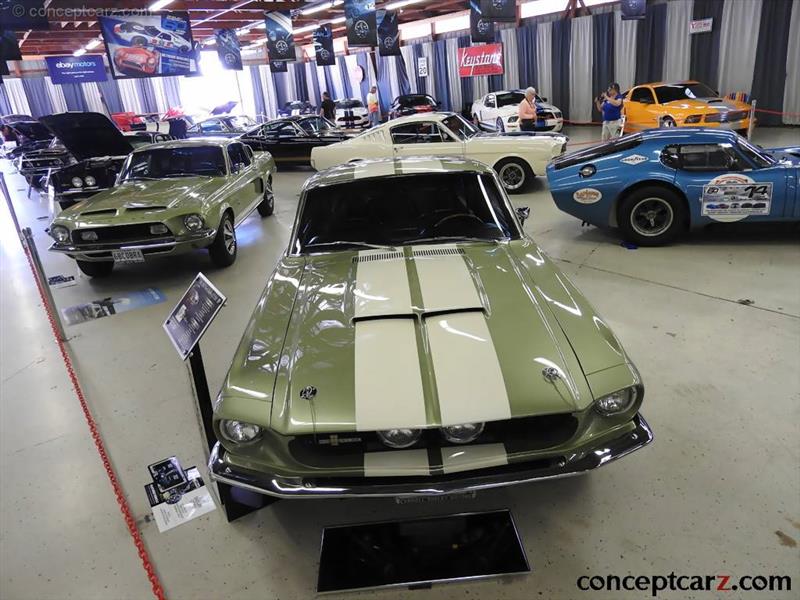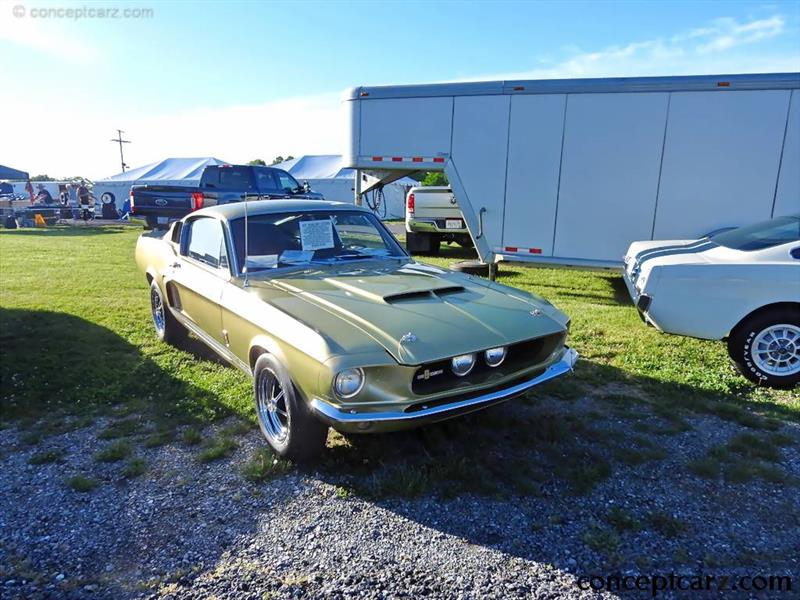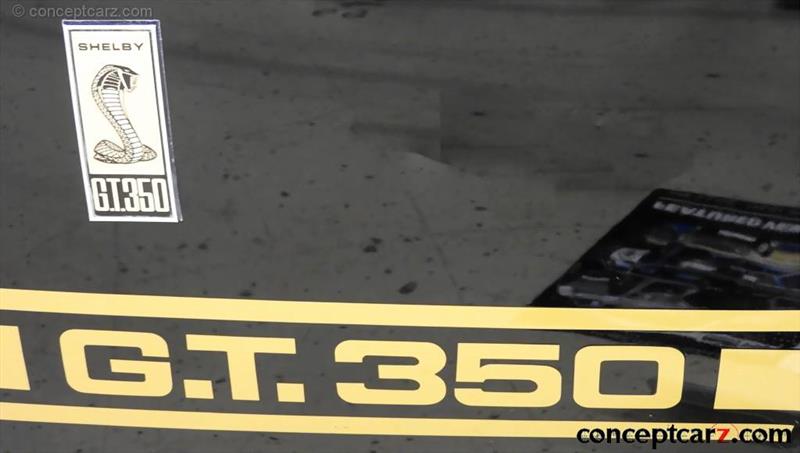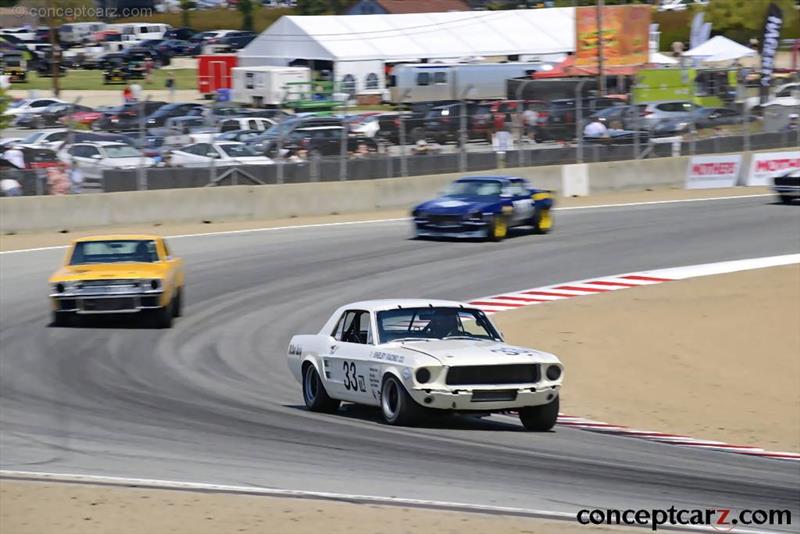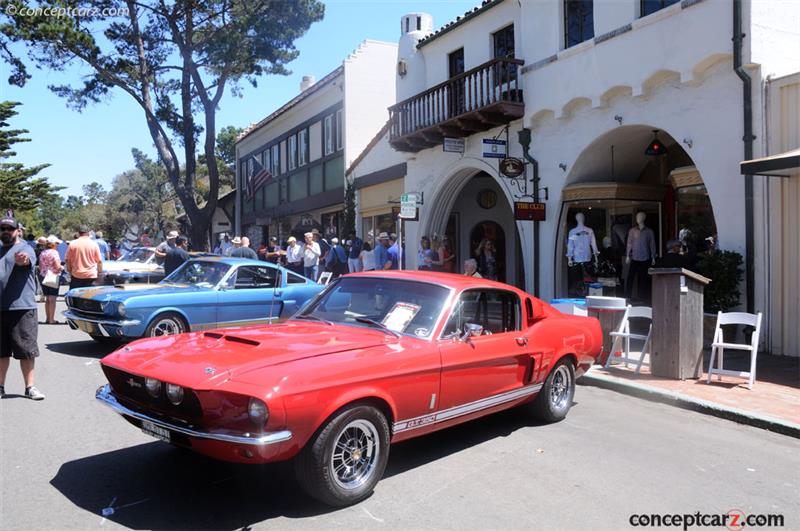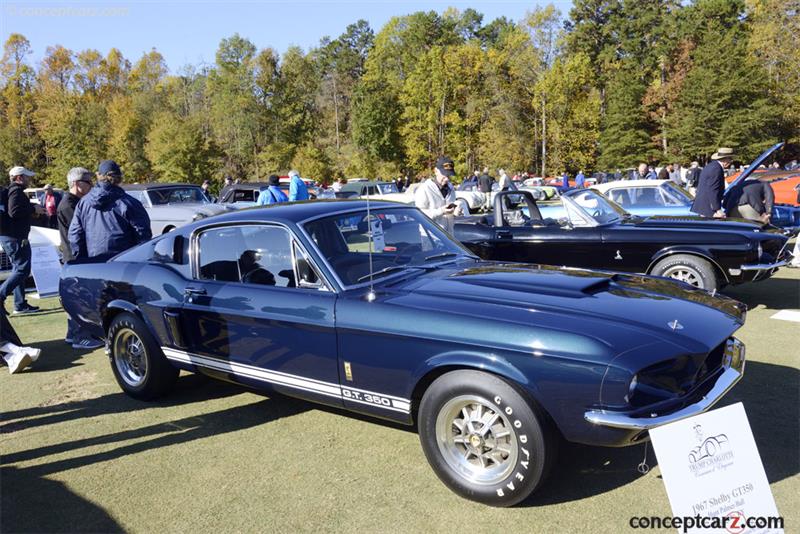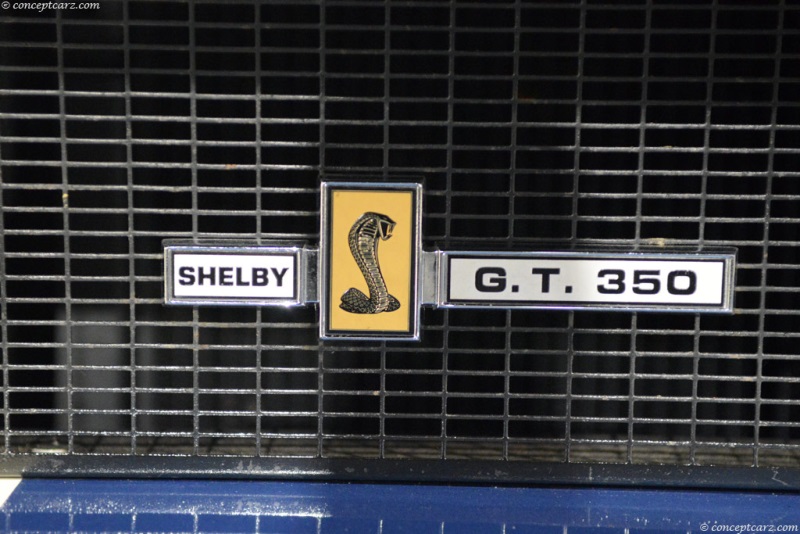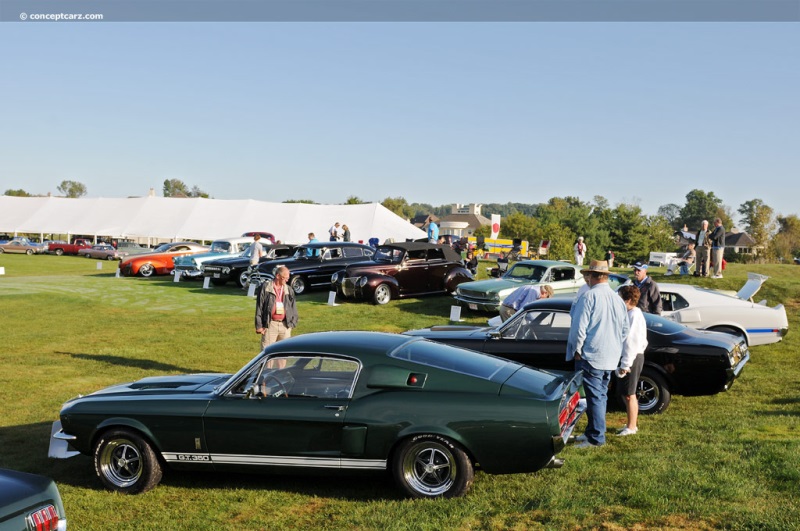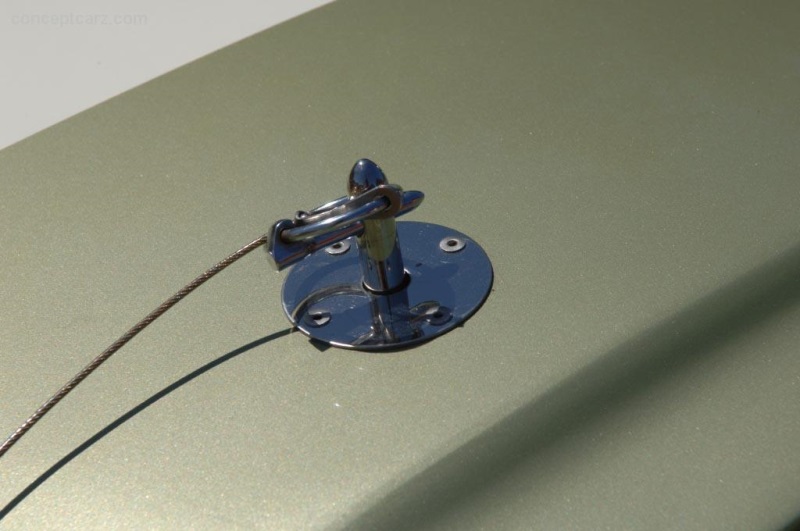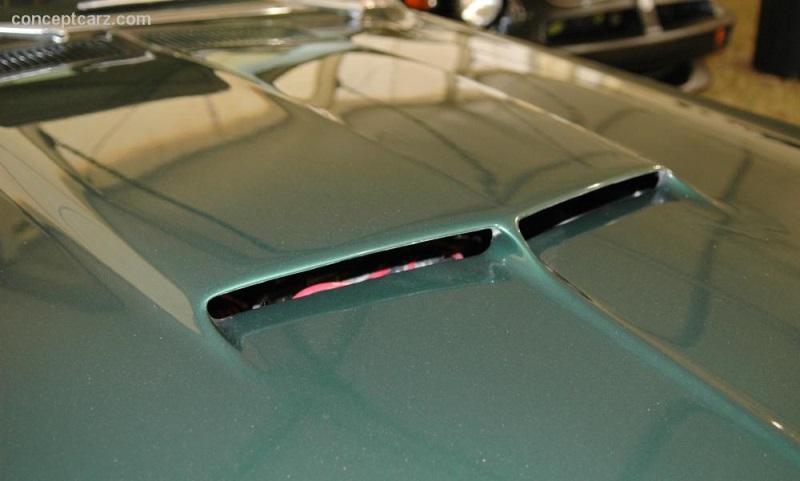Texan racing driver Carroll Shelby and his team had been campaigning Ford's Mustang with considerable success in North America, winning the SCCA's B-Production title three years running in the mid-1960s. Shelby was known, trusted, and respected by Ford, thanks to his efforts in engineering the Cobra projects. Capitalizing on this success, Shelby began modifying Mustangs, which were officially sanctioned and sold through select Ford dealerships. Called the GT350, they arrived in 1965 with power from a modified version of Ford's 289 cubic-inch (4.7-liter) small-block V8 engine, with an aluminum intake manifold and Shelby's own headers, offering just over 300 horsepower, with options of a 340 to 360 horsepower unit in competition or 400 bhp supercharged. The stock transmission on early Shelby Mustangs was a four-speed Borg-Warner manual gearbox, though a heavy-duty, three-speed automatic soon became available as optional equipment. To handle the increase in power, the running gear was improved with a stronger Ford Galaxie rear axle, Koni adjustable shock absorbers, aluminum-alloy wheels, and Kelsey-Hayes front disc brakes. The early cars were delivered devoid of rear seats, thereby qualifying the GT350 as a two-seat sports car. There were few distinguishable exterior features that set Shelby's GT350 from the standard Mustang, apart from a pair of broad 'racing' stripes down the body center-line with the GT350 logo. There was a fiberglass hood with functional scoops. All external Mustang emblems were removed, and Shelby added his own equine badge on the left side of the grille. The GT350's were offered in white. In 1966, the GT350s became available in red, green, blue and black, all with a white stripe and GT350 logo. During the year, hoods were changed to steel because the fiberglass was proving troublesome. The grille emblem became smaller and a new GT350 gas cap was adopted. Styling updates demanded by the new Mustang bodyshell for 1967 were led by Ford designer Chuck McHose in concert with Shelby American. In the front were aggressive hood scoops and large European-style driving lights (initially inboard, later outboard). In the back, upper and lower rear-quarter scoops, an upturned deck spoiler, and sequential turn signals sourced from Mercury's new Cougar were installed. The interior received the Mustang GT-level appointments plus a 140-mph speedometer and roll bar with inertia-reel shoulder harnesses. Other interior appointments included a wood-rimmed 'GT350' steering wheel, supplemental Stewart-Warner oil pressure and ammeter gauges, power brakes, power steering, and a fold-down rear seat. 
Fastback
Chassis #: 7R01K21830The 1967 Shelby continued to be powered by the 289 cubic-inch 'K-Code' V8, still rated at 306 horsepower, and topped by a host of 'COBRA' dress-up items. The list of standard features included progressive-rate front springs, 15-inch wheels including optional Kelsey-Hayes Mag Stars, and Shelby's 10-spoke cast-aluminum wheels. Optional items included air-conditioning, Le Mans stripes, automatic transmission, tinted glass, and a choice of Traction-Lok or Detroit Locker rear ends. For 1967, Shelby American built 1,174 examples of the GT350, and 2,048 GT500s for 1967. 1967 marked the end of the line for the Los Angeles-built Shelby GTs, which would be produced for 1968 and thereafter under Ford's direction in Detroit.
The Shelby Mustang would continue to be based on the stock Mustang versions, received the styling and mechanical changes of the Mustang as they occurred, while retaining its own distinctive and unique features, until production ended in 1970. Paxton Supercharger
In January of 1965, Paxton's Andy Granatelli approached Carroll Shelby with the idea of offering a supercharger kit on the Shelby. Shelby loaned an early GT350 to Granatelli, who demonstrated the prototype in July of that year. The conversion was rather straight-forward and offered a substantial increase in performance. The following year, Shelby introduced a special-order option for the supercharger, and eleven 1966 GT350s were equipped with the Paxton supercharger, Autolite 4100 4-barrel carburetor, and Carter high-volume fuel pump. With the supercharger, the engine offered 390 horsepower and was capable of sub-6 second zero-to-sixty MPH acceleration and had a top speed that exceeded 150 mph.
Fastback
Chassis #: 7R01K21830The Paxton supercharger kits were offered again in 1967, with 35 GT350 buyer's selecting this option. Motorsports
In December 1964, the Sports Car Championship of America accepted the GT-350 into B-Production racing. The Shelby GT350 dominated the opposition on the track, particularly the Chevy Corvette, securing three straight SCCA B-Production championships in 1965, 1966, and 1967. The Shelby GT350 Mustang had been allowed to compete in the SCCA B Production class because it had no rear seats, which effectively kept the Shelby Mustangs out of the Trans-Am series. Officials didn't care that by 1967 the Shelby Mustang could be acquired with or without a back seat, as the rules had been set in 1965 and continued to be observed.
Fastback
Chassis #: 67200FA 02520Nearly all of the Mustang efforts in the Trans-Am, prior to 1968, were essentially by privateer teams, including Bob Johnson, Brad McComb/ John Booker, and Jerry Titus. Although the Ford nearly fell short, Shelby and driver Titus in the Shelby-prepared car would save Fords manufacturers championship by earning enough points with winning the final race of the season at Riverside. Ford was eager to take part in the 1967 Trans-Am series which they hoped would boost sales. For the 1967 season, the SCCA expanded the Trans-Am series to twelve races, hoping to entice manufacturers like Ford, Chevrolet, and Mercury. Shelby American worked quickly to homologate the 1967 Mustang. FIA Group II rues for sedans stated that most of the mechanical modifications Shelby had implemented for the GT 350 R would be allowed on the Group II cars. Since the R models had been raced for two years, their components and modifications had been thoroughly tested, evaluated, and refined. 
FastbackGroup II rules dictated that the cars needed to maintain stock appearance, including all window glass. Shelby American GT 350 Project Engineer Chuck Cantwell was tasked with making sure the Shelby cars conformed to Group II regulations. Fabricator Jerry Schwarz, who also had experience with prior projects, was tasked with much of the aesthetic work. A prototype example was built and from it came the team and customer cars. The SCCA's decision to entire major manufacturers worked and they were rewarded with a growing fan base. Manufacturers who competed also saw increases in sales. Once again, the final race of the season was once again a winner-take-all shootout that would see the Shelby Mustang with the most points when the checkered flag fell for the final time. It is believed that Shelby American built a total of 26 1967 Mustang Group II races, with one being a prototype that was never actually raced by the team. The prototype was used for the evaluation of components and then sold during the race season. Four were team cars and the remaining 21 cars were sold to privateers who used them in Trans-Am and/or SCCA A-Sedan competition.
by Daniel Vaughan | Feb 2020
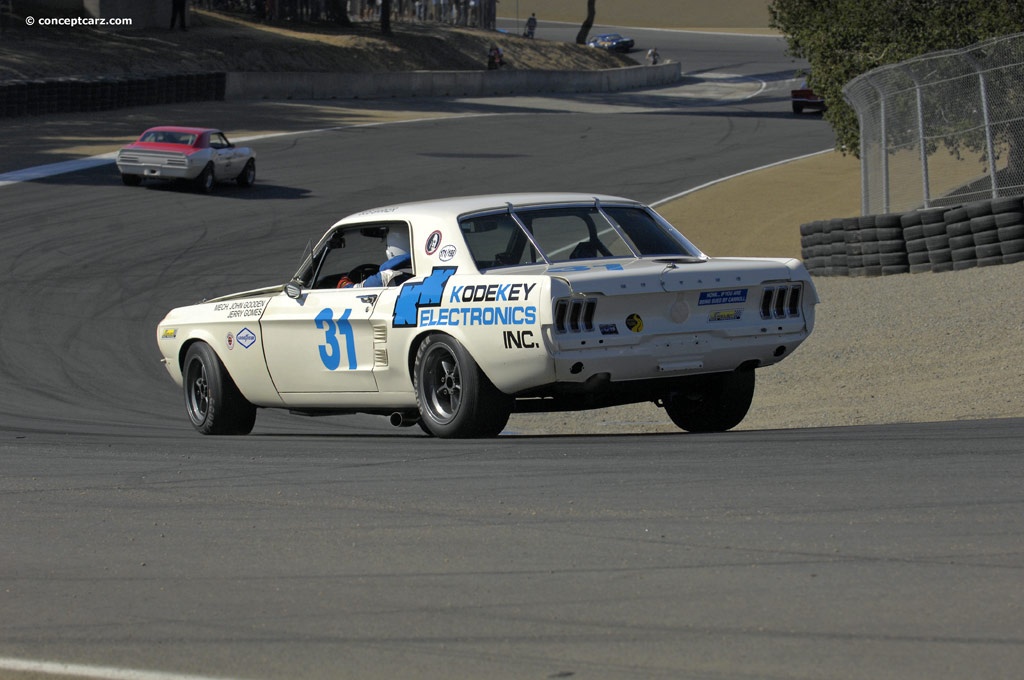
Fastback
Chassis #: 7R01K21830
The Shelby Mustang would continue to be based on the stock Mustang versions, received the styling and mechanical changes of the Mustang as they occurred, while retaining its own distinctive and unique features, until production ended in 1970. Paxton Supercharger
In January of 1965, Paxton's Andy Granatelli approached Carroll Shelby with the idea of offering a supercharger kit on the Shelby. Shelby loaned an early GT350 to Granatelli, who demonstrated the prototype in July of that year. The conversion was rather straight-forward and offered a substantial increase in performance. The following year, Shelby introduced a special-order option for the supercharger, and eleven 1966 GT350s were equipped with the Paxton supercharger, Autolite 4100 4-barrel carburetor, and Carter high-volume fuel pump. With the supercharger, the engine offered 390 horsepower and was capable of sub-6 second zero-to-sixty MPH acceleration and had a top speed that exceeded 150 mph.
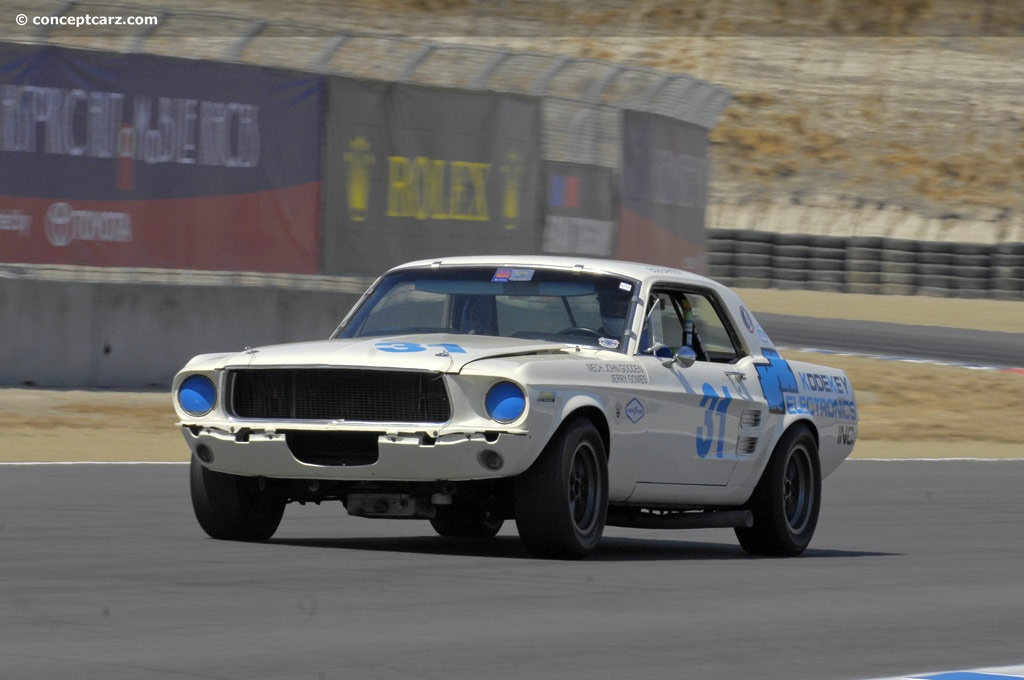
Fastback
Chassis #: 7R01K21830
In December 1964, the Sports Car Championship of America accepted the GT-350 into B-Production racing. The Shelby GT350 dominated the opposition on the track, particularly the Chevy Corvette, securing three straight SCCA B-Production championships in 1965, 1966, and 1967. The Shelby GT350 Mustang had been allowed to compete in the SCCA B Production class because it had no rear seats, which effectively kept the Shelby Mustangs out of the Trans-Am series. Officials didn't care that by 1967 the Shelby Mustang could be acquired with or without a back seat, as the rules had been set in 1965 and continued to be observed.
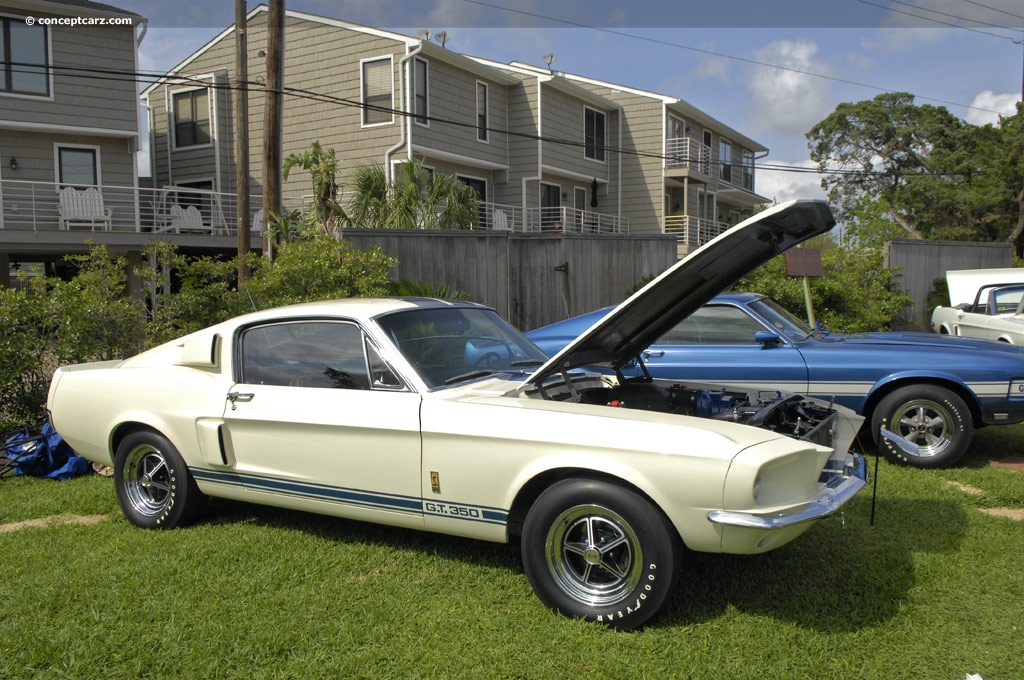
Fastback
Chassis #: 67200FA 02520
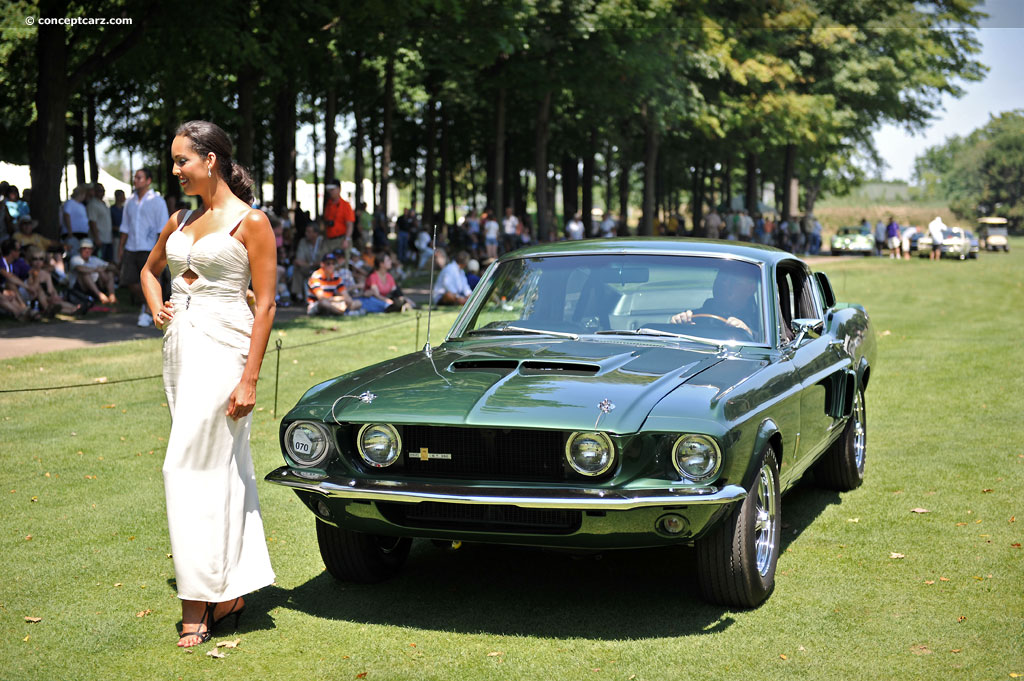
Fastback
by Daniel Vaughan | Feb 2020
Related Reading : Ford Mustang History
The Mustang was introduced at the 1965 New York Worlds Fair, Mustang Mania instantly swept the country, and a new automotive market segment was created - the 22 or better known as the ponycar. Though its mechanical underpinnings descended from the Falcon, the Mustang was completely different. It was a compact, tight, clean package weighing in at a modest 2,550 pounds - a departure from the ever-enlarging....
Continue Reading >>
Continue Reading >>
Related Reading : Ford Mustang History
The Ford Mustang first appeared in 1964 and was immediately popular for its style and its capabilities. The largest engine offering of the time was the 289 V-8 K-code small block engine which was sufficient but enthusiasts wanted and demanded more power. The base engine was a six-cylinder power plant. The body style configurations included coupe, convertible and fastback. In its first year of....
Continue Reading >>
Continue Reading >>
Related Reading : Ford Mustang History
A pillar of American automotive lore, the Mustang is the vehicle the brought sporting dash and styling at a price that almost everyone could afford. Always extraordinarily attractive, the Mustang has been capturing the hearts of drivers for nearly 40 years. Introducing a whole new breed of automobile, the pony car, Ford wasnt content to stand on the sidelines while others jumped ahead. Rather than....
Continue Reading >>
Continue Reading >>
Similar Vehicles
Similarly Sized Vehicles
from 1967
Similarly Priced Vehicles
1967 Shelby Mustang GT 350 Vehicle Profiles
Recent Vehicle Additions
Performance and Specification Comparison
Price Comparison
$2,194
$2,295 - $3,065
$2,460 - $2,695
$2,740 - $3,495
$2,790 - $2,905
$3,235 - $3,360
$4,395
$4,605 - $4,828
Shelby Mustang GT350 Specification Comparison by Year
Year
Production
Wheelbase
Engine
Prices
Related Automotive News

Barrett-Jackson to Offer a Spectacular Selection of Shelby Vehicles at the 2022 Scottsdale Auction, including a 1967 Shelby Cobra 427, the Lance Reventlow Cobra and a Premier Award-Winning 1965 GT350
Barrett-Jackson will celebrate 50 years of The Worlds Greatest Collector Car Auctions at its 2022 Scottsdale Auction, January 22-30, at WestWorld of Scottsdale. One of the most spectacular No Reserve dockets ever amassed at Barrett-Jackson, including...

Legendary Rush Drummer Neil Peart Estate Car Collection to be Presented at Gooding & Company's Pebble Beach Auctions
The iconic musicians personal cars, which he dubbed the Silver Surfers, including a 1964 Aston Martin DB5, a Shelby Cobra 289, and a Lamborghini Miura P400 S, will be auctioned at Pebble Beach in August.
Gooding %26 Company, the official auction...

RM Sotheby's Announces Diverse Final Entries Set For Online Only: Open Roads, North America
ONLINE ONLY AUCTION TO FEATURE NEARLY 100 MOTOR CARS HEADLINED BY AS-NEW SHELBY 427 SC COBRA SANCTION II
OPEN FOR BIDDING 23-30 JULY
RM Sothebys announces latest entries for Online Only Open Roads, North America, led by 1965 Sh...

Sonoma Historic Motorsports Festival Celebrates Corvette'S 60 Years At Sonoma Raceway
Fast cars, fine food and wine highlight May 18-19 weekend
Paul Reinhart is honored guest, popular racing seminar scheduled for second year
SONOMA, Calif. (April 27, 2013) - The Sonoma Historic Motorsports Festival returns to Sono...

Carroll Shelby, Ford Family for More Than Half a Century
Carroll Shelby was a member of the Ford family for the better part of 60 years, producing stunning performance vehicles from concepts to production models.
He once said his energy and passion for performance products were always strongest when he was...




























